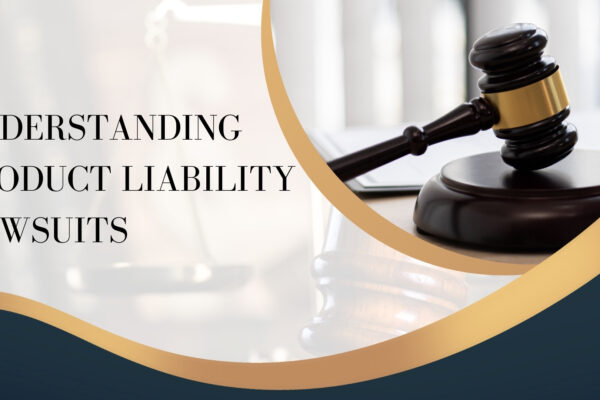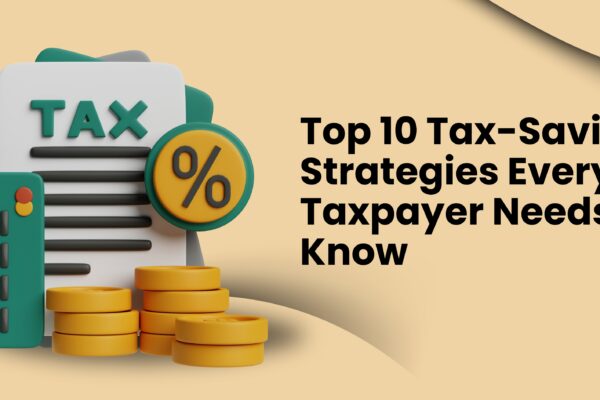Supply of Used Business Assets under GST
This writeup deals with all the aspects related to supply of old and used business assets under GST. Being a business person there are various assets that are required for furtherance of business and after a span of time, they are sold as a second hand goods. In such a scenario, whether such a taxable person is required to charge taxes on such supply? Is it allowed to avail the input tax credit on purchase of such assets? Also, what treatment is required to be done by the dealer of second hand goods who is engaged into the business of buying and selling of second hand goods? Is he required to pay taxes on full value or any other method has been prescribed by the act. Answers to all these questions have been provided which includes the following discussion where such assets are supplied by :
- A registered person
- An unregistered person
- A composition dealer
- An individual selling his personal assets
- A person dealing in sale and purchase of second hand goods.
- Rate of GST on old Motor Vehicle as per N/N 8/2018- CT(R)
- Purchase value of goods repossessed from a defaulting borrower.
Let’s discuss one on one basis:
Table of Contents
- Supply of capital goods by a Registered Person on which ITC has been availed.
- Supply of capital goods by a Registered Person on which ITC has not been availed.
- Supply of used assets by unregistered persons
- Supply of used assets by Composite Dealer
- Supply of personal assets of an Individual
- Supply by the person who is dealing in purchase and sale of second hand goods
- Rate of GST on old Motor Vehicle as per N/N 8/2018- CT(R)
- Purchase value of goods repossessed from a defaulting borrower.
Supply of capital goods by a Registered Person on which ITC has been availed.
Section 18(6) read with rule 44(6) of CGST Act 2017 comes into force where goods are supplied by a registered person. This section states that where input tax credit has been availed by a registered person then Higher of the following shall be tax payable:
- Tax on outward supply or
- ITC taken on such capital goods as reduced by such percentage points as may be prescribed.
This can be understood with the help of an example:
Fixed asset purchased worth Rs. 1,00,000 in the month of July 2017 and input tax credit @ 18% i.e. Rs.18000 had been taken in the month of July 2017. This fixed asset was sold out in the month of August 2019. The person has used this fixed asset from July 2017 to August 2019 i.e. for 26 months.
Related Topic:
Valuation of second-hand machinery: Circular No. 07/2020
Useful Life of the Fixed asset is 5 years according to Rule 44(1)(b) i.e. 60 months. Remaining unused life of the Fixed asset is 34 months (60-26). The Fixed asset has been sold for Rs.60000 and tax charged Rs.10800.
| Total Input Tax Availed | 18,000 |
| Useful Life of the Fixed asset | 60 months |
| Period of Fixed asset Used | 26 months |
| Unused period of Fixed asset | 34 months |
| Tax on Pro rata basis for unused period i.e.34 months
(18000/60*34) |
10,200 |
Since the tax Rs.10800 charged on the transaction value of the Fixed asset is more than the tax Rs.10200 as calculated for the unused period of the Fixed asset, therefore the higher amount of tax Rs.10800 shall be paid.
Related Topic:
GST on Sale of Old Vehicles ( From 1.1.17 Till Date)
Supply of capital goods by a Registered Person on which ITC has not been availed.
Possible scenarios where ITC is not availed by registered person can be:
- Where such assets are used in supply of goods which have been exempted from tax or
- Such assets were purchased during pre GST regime or
- Due to any other reason.
In all such cases, transaction value shall be the value on which value such asset is to be sold. Tax shall be charged on transaction value as per rate applicable to the asset to be sold.
Note: Where business assets on which credit has been duly availed as per GST provisions are supplied without any consideration. Such transactions also constitute supply even made without consideration as per the provisions of SCHEDULE 1 of CGST Act.
Related Topic:
Show Cause Notice Under GST Regime
Supply of used assets by unregistered persons
An unregistered person is not required to pay any tax on supply of his used assets. But if due to this supply, he becomes liable for registration within the provisions of section 22 or section 24 then, he needs to get himself registered and thereafter provisions applicable to the registered person will come into effect.
Supply of used assets by Composite Dealer
A person who has opted for composition scheme is required to pay tax at a fixed rate without ITC as prescribed under section 10 of CGST Act, 2017. A composite dealer cannot charge tax from its recipient and he is also not allowed to claim ITC on the purchases made.
If we refer Section 7(1)(a) of act, it says “Supply” includes all forms of supply of goods or services or both such as sale, transfer, barter, exchange, license, rental, lease or disposal made or agreed to be made for a consideration by a person in the course or furtherance of business.The term supply includes supply of assets also.
Moreover, a composition dealer is required to pay tax on “turnover in a state or union territory” . Section 2(112) defines “turnover in State” or “turnover in Union territory” means the aggregate value of all taxable supplies (excluding the value of inward supplies on which tax is payable by a person on reverse charge basis) and exempt supplies made within a State or Union territory by a taxable person, exports of goods or services or both and inter-State supplies of goods or services or both made from the State or Union territory by the said taxable person but excludes central tax, State tax, Union territory tax, integrated tax and cess.
There is no provision that excludes supply of assets by composition dealers from regular supply that is made by composition dealers. Thus, we can conclude that the rate which is applicable to a composition dealer shall be the rate to be charged for supply of assets.
Related Topic:
GST on Transfer of Development Rights or Long term Lease
Supply of personal assets of an Individual
As discussed above, a transaction constitutes SUPPLY only if it fulfils all the conditions mentioned under section 7, one of the conditions is that it should be in the course or furtherance of business.
Since in this case, supply of personal assets is neither for the purpose of business nor in the course of furtherance of business. Therefore, GST shall not be charged on supply of such assets made by such person.
Supply by the person who is dealing in purchase and sale of second hand goods
Rule 32(5) of CGST Rules, 2017 has been provided for such second hand goods dealers. According to this rule, TAXABLE VALUE for supply of second hand goods shall be the margin value where, margin value is the difference between the selling price and the purchase price. If such a difference is negative, it shall be ignored. But this rule of margin value scheme comes out with the following conditions:
- The Supplier should be registered under the GST;
- The supply of goods shall be sold as such as it were purchased or after minor processing which does not change the nature of goods and
- Where no input tax credit has been availed on the purchase of such goods.
Example: a person purchases a second hand refrigerator for Rs.3000. After some repairs the person sells it for Rs.4000. The taxable value (margin value) shall be Rs.1000 being difference between selling value and purchase value. Tax shall be charged on Rs.1000. Rate of tax on such supply of goods shall be the same as applicable to such goods in normal course.
Rate of GST on old Motor Vehicle as per N/N 8/2018- CT(R)
The only condition to avail this notification is that the person had not availed input tax credit on such motor vehicle. The taxable value in this case shall be margin amount determined as under:
- If depreciation has been claimed:
Transaction value that represents the margin of the supplier shall be the difference between the consideration received for supply of such goods and the depreciated value of such goods on the date of supply.
2. If depreciation has not been claimed:
Value that represents the margin of the supplier shall be the difference between the selling price and the purchase price.
If the margin value in both the above cases is negative then it shall be taken as zero.
For example: the depreciated value of the motor vehicle as on 31-03-2020 is Rs.150000 and the person supplies this motor vehicle at Rs.160000. The margin shall be Rs.10000 i.e. difference between the consideration received and the depreciated value.
Purchase value of goods repossessed from a defaulting borrower.
Many times goods are repossessed due to default committed at the end of borrower. In such cases also, goods which are repossessed for the purpose of recovery of loan or debt given are second hand goods. Valuation has been prescribed in which purchase value of such repossessed goods shall be deemed to be the purchase price of such goods by the defaulting borrower reduced by five percentage points for every quarter or part thereof, between the date of purchase and the date of disposal by the person making such repossession.
For example:
| Date of Purchase by Defaulting Borrower | Amount of Purchase | Date of
Disposal |
Qtrs. Including part qtr. between date of purchase and date of disposal | Value after reducing @ 5% for each qtr and part qtr. |
| 01.04.2018 | 118000 | 31.03.2020 | 8 | 70800 |
| 01.04.2018 | 118000 | 01.04.2020 | 9 | 64900 |
For reference:
| Rate of Old & Used Motor Vehicles ( Notification no.8/2018-Central Tax (Rate) | |||
| S.no | Chapter,
Heading, Subheading or Tariff item |
Description of Goods | Rate(%) |
| 1 | 8703 | Old and used, petrol Liquefied petroleum gases (LPG) or compressed natural gas (CNG) driven motor vehicles of engine capacity of 1200 cc or more and of length of 4000 mm or more.
Explanation. – For the purposes of this entry, the specification of the motor vehicle shall be determined as per the Motor Vehicles Act, 1988 (59 of 1988) and the rules made there under |
9 |
| 2 | 8703 | Old and used, diesel driven motor vehicles of engine capacity of 1500 cc or more and of length of 4000 mm
Explanation. – For the purposes of this entry, the specification of the motor vehicle shall be determined as per the Motor Vehicles Act, 1988 (59 of 1988) and the rules made there under. |
9 |
| 3 | 8703 | Old and used motor vehicles of engine capacity exceeding 1500 cc, popularly known as Sports Utility Vehicles (SUVs) including utility vehicles.
Explanation. – For the purposes of this entry, SUV includes a motor vehicle of length exceeding 4000 mm and having ground clearance of 170 mm. and above. |
9 |
| 4 | 87 | All Old and used Vehicles other than those mentioned from S. No. 1 to S.No.3 | 6 |












